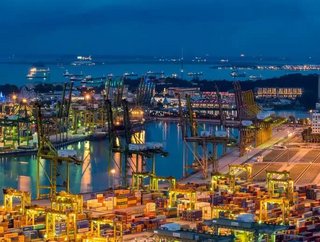Add some muscle: How to avoid being hamstrung by your supply chain the next time a crisis hits

The very nature of supply chains – the movement of goods and services – means it’s unsurprising they have been seriously disrupted by the global COVID-19 pandemic. With several areas in lockdown, borders shut, and businesses ordered to temporarily close by governments, many organisations have been thrown into chaos. We’ve seen UK manufacturers suddenly halting production after having the flow of parts into factories cut off, while (non-grocery) retailers have taken a range of actions from shutting stores and ramping up online operations to cancelling orders altogether.
Lean, or frail?
So why have the businesses that can trade through the crisis found it particularly challenging? Besides the panic buying that’s made it very difficult to predict demand, according to Warwick University Manufacturing Group research, businesses have been focused on trying to improve visibility across their supply chains and using that to predict potential future demand and supply. They have not progressed beyond this to what the research labels ‘stage three and four sophistication’ – by which point they would become prescriptive, self-learning and autonomous.
Before the crisis hit, sustained economic growth meant businesses were focussed on making their supply chains as lean as possible, so they could provide goods quickly and cost-effectively. One might argue that rather than being lean, supply chains had accidentally become frail – they were simply not prepared to react to disruption. As McKinsey notes, it’s impossible to foresee unknown risks – whether they’re natural, such as a volcanic eruption near a factory, or man-made, for example if a supplier goes out of business. No crystal ball exists that will allow businesses to predict these kinds of events, so they must put their supply chains in a better position to react when they happen.
A strategy for getting supply chains into shape
Just as many people are re-evaluating their diet and exercise regimes so they can get into good shape while on lockdown, businesses need to find ways to make their supply chains stronger and more resilient too. Firstly, they should review their overall strategy for sourcing items. As a case in point, since the crisis hit, the manufacturing industry’s reliance on parts solely produced in APAC has led to considerable disruption. By developing additional sources closer to home, potential issues can be reduced helping retailers avoid risks like items being delayed while in transit, or factories being placed under restrictions or lockdowns that are not immediately obvious to European businesses.
Using technology for 20/20 vision
Supply chain management technology can also play a crucial role; if businesses cannot keep track of everything that is happening, how can they even begin to react when they hit disruption? This is where control towers can be deployed to give visibility over all activity, offering a visual representation that makes it possible to fully comprehend the status of all moving parts. This viewpoint makes it a more realistic prospect to identify problems as they are beginning to unfold, and to figure out how to resolve them.
Once full visibility over activity has been achieved, businesses can also use Artificial Intelligence (AI) and Machine Learning (ML) to ‘read’ what is going on and recommend how to fix problems. In time, AI/ML systems could even put those changes into place without input from humans, to form an autonomous supply chain. AI can also start to predict disruptions and then, autonomously prevent or avoid them.
Building the muscles
The COVID-19 pandemic has forced many businesses to sit up and realise that their supply chains have gone beyond being ‘lean,’ and have instead become frail. Once the chaos began – and continues – to unfold, it became clear that too many businesses relied heavily on suppliers that were single-source and based halfway around the world.
Now’s the time to learn from this mistake and build up better visibility and a higher level of risk-awareness. Businesses must focus on building up the muscles of a strong supply chain by using strategies that give them more options, while employing technology to provide extra insight and guidance. If they can do this, businesses will emerge with a stronger supply chain, putting them in a much greater position to deal with disruption in the future.






